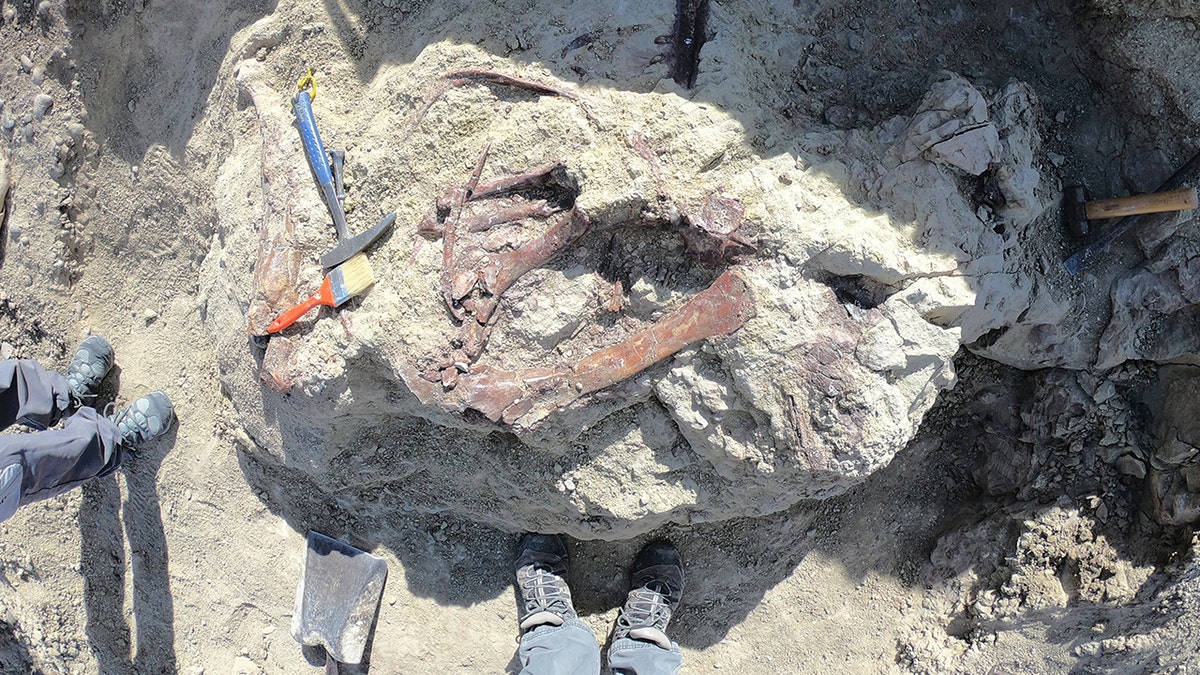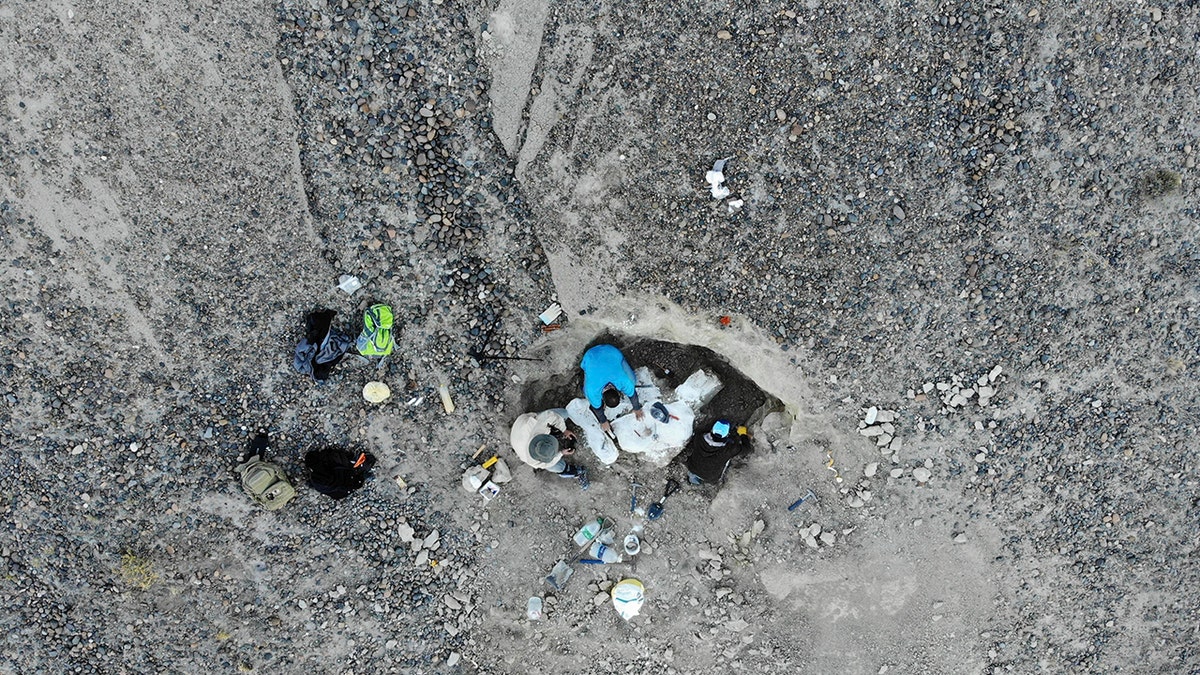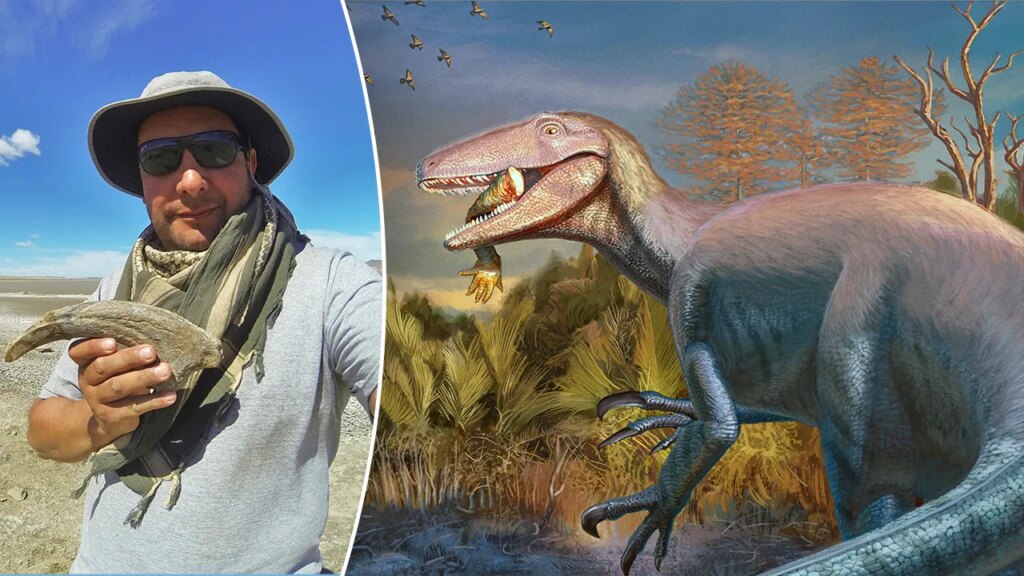NEWYou can now listen to Fox News articles!
Scientists recently uncovered a new dinosaur — and its ancient leftovers – in a tourist hotspot in Argentina.
The dinosaur, which measured 23 feet long, is called Joaquinraptor casali. Its discovery was publicized in the journal Nature Communications on Sept. 23.
Joaquinraptor casali lived between 66 and 70 million years ago, around the time when the dinosaurs went extinct.
MISSOURI ARCHAEOLOGISTS HUNT FOR ANCIENT CIVILIZATION IN THE AMAZON: ‘CHASING BIG GOALS’
Scientists unearthed the bones at the Lago Colhué Huapi rock formation in Patagonia, a region known for its glaciers, mountains and wildlife.
In sum, researchers found the creature’s skull, arm, leg and tail bones – and a leg bone pressed against its jaws.
The leg bone, which belonged to an ancient ancestor of crocodiles, shows that the dinosaur was a carnivore and may offer clues into the food chain of ancient Patagonia.
ARCHAEOLOGISTS DISCOVER UNTOUCHED TOMB LINKED TO KING MIDAS’ DYNASTY: ‘HIGH LEVEL OF WEALTH’
The creature was part of a group called the megaraptorans, which have been found across South America, Australia and Asia.
Unique features in the bones pointed to it being a new species.
“[The find] fills a major gap by providing one of the most complete skeletons yet.”
The team was joined by paleontologist Lucio Ibiricu of the Patagonian Institute of Geology and Paleontology, who named the discovery after his son, Joaquin.
“All children love dinosaurs, so he would probably be a fan too,” he said, as The Associated Press reported.
Ibiricu added that megaraptorans boasted “huge and very powerful claws,” in addition to having signature stretched-out skulls.

Federico Agnolin, a paleontologist at the Argentine Museum of Natural Science who was not involved in the research, told AP that the latest discovery “fills a major gap by providing one of the most complete skeletons yet.”
MORE FROM FOX NEWS LIFESTYLE
Researchers are unsure what killed the dinosaur, but they believe the creature was at least 19 years old when it died.
The discovery adds to other exciting paleontological finds in 2025.

Earlier this year, paleontologists discovered a 506-million-year-old “moth-like” predator that lurked in prehistoric Canada.
In Texas this spring, construction crews unearthed colossal remains of what they called “big ol’ animals.”
The Associated Press contributed reporting.
Read the full article here







